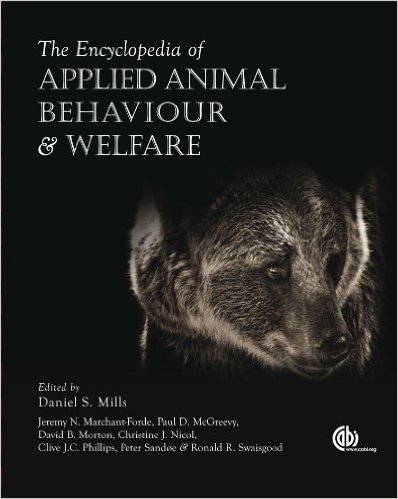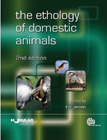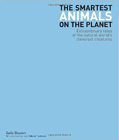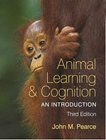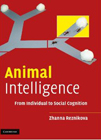Books on Animals: Miscellaneous
Animal Behaviour Books
If you want to buy a book, clicking on the book cover will take you directly to that book on the Amazon.co.uk web site.
See also :

Encyclopedia of Applied Animal Behaviour and Welfare
This weighty encyclopedia provides definitions and explanations of key concepts and topics in animal behaviour and welfare. It’s set out in alphabetical order so you’ll find entries like ‘Central Nervous System’ after ‘Breeding’, ‘Dominance’ after ‘Confinement’, and ‘Hierarchy’ after ‘Grazing Behaviour’ and before ‘Immune Systems’. This encyclopedia is invaluable as a reference work, for checking that you do really understand certain terms – especially important when the same term has more than one accepted definition.
If you try to read the book straight through, sometimes it feels like you’re jumping all over the place, say, from research methods to the practicalities of housing animals, but of course, organizing entries in alphabetical order does make it easy to look up any particular term. There are also short essays which look at key concepts in depth, and there’s extensive cross-referencing, which means that you can follow up related terms, if you want to get a fuller picture of any topic. This makes the encylopedia fascinating as an in-depth guide to a wide range of topics from different fields, such as ethology, phylogeny, and animal husbandry, including how they have developed over time, and current concerns.
The approach aims to improve understanding of work in different disciplines for people who have no option but to take a multi-disciplinary approach. Animal behaviour specialists interested in cognition are sometimes rude about behaviourism, while behaviourists are sometimes rude about ethology. While bang on the table arguments that emphasise differences between approaches can be fun, it can also help to see how different approaches might fit together, and sometimes even complement out another, rather than being mutually exclusive.
The aim of the book is to promote practices likely to enhance welfare in companion, farm and zoo animals. Understanding animal welfare means understanding animal behaviour in a broad sense, as well as signs of compromised welfare, such as indications of stress. Research, and examining ethical and practical issues, can point to good practices for anyone involved in caring for animals, like farmers, vets, shelter workers, as well as those who make recommendations for regulations.
The main editor of the encyclopedia is Professor Daniel Mills from Lincoln University. The key contributors are listed above as authors, though there are some 180 contributors in all, including Katherine Houpt, Juliet Clutton-Brock, and Helen Zulch.
Who is likely to find this book useful? Anyone who wants to understand concepts in animal behaviour, and any professional dealing with animals. The book is horrendously expensive for most people, though it’s possible to find slightly damaged copies that are much cheaper than the price for a new and pristine copy. The price, alas, is likely to restrict the readership of this book, which is a very useful resource for people exploring animal behaviour.

The Ethology of Domestic Animals: an introductory text
This book is a collection of articles by specialists, edited by Per Jensen, Professor of Ethology at Linköping University, Sweden, who has a particular interest in behaviour genetics.
The first six chapters of the book are a general introduction to key areas and concepts in animal behaviour, looking at behavioural genetics, domestication and evolution, physiology and behaviour, motivation, learning and cognition, social and reproductive behaviour, abnormal behaviour and welfare, and human-animal relations. Chapters seven to thirteen look at different key species of domestic animals, fowl, horses, cattle, sheep, goats, pigs, cats, dogs, and rabbits and rodents. There’s a strong emphasis on implications of current knowledge for animal welfare, whether for farm animals such as pigs and sheep, or companion animals such as cats and dogs.
Read more: The Ethology of Domestic Animals: an introductory text

The Smartest Animals on the Planet
Sarah Boyson's 'The Smartest Animals on the Planet' is a fascinating account of animal intelligence, geared to literate non-scientists. It is easy to find your way around the book, which is written clearly, and has a lot of photos, some very beautiful, as well as other illustrations to explain the text. If you have already read widely in this field, 'The Smartest Animals on the Planet' probably won't tell you a lot you don't already know, but if you are wondering what cognitive ethology is all about, this is probably the best introduction, both informative and enjoyable to read.
The book covers how animals may use tools, how they communicate, including use of language, ways that animals learn, such as imitation and social learning within a group, the implications of some animals being able to recognise themselves in mirrors, the abilities of animals to handle numbers, emotion and intelligence, and co-operation and altruism.
Sally Boysen herself has worked on chimpanzee cognition, though the book covers a wide range of animals, including elephants, whales, otters, rats, horses, crows, woodpeckers, salamanders, and insects like honeybees. Very highly recommended as an enjoyable introduction to understanding animal intelligence.

Animal Learning and Cognition: An Introduction
This is probably the best of the more serious introductions to Animal Learning and Cognition, in that it both has academic rigour, and is relatively easy to read, even for a non-biologist. It's easy to find your way around the text, and illustrations make reading the book more enjoyable. Information is presented in bite-sized chunks, which makes this a good book for getting to grips with the topic. The original book was so popular that it has now run to this third edition. There are more changes in the second part, relating to animal cognition, than to the first part, relating to learning. This reflects the rapid development of research on animal cognition. 'Animal Learning and Cognition' is also backed by by online resources such as multiple-choice questions - useful for people teaching the subject looking for course materials, as well as for students.
The book starts off with an historical account of how animal intelligence has been studied, including Pavlovian and instrumental conditioning, then moves on from traditional learning theory to new areas of research in animal cognition like memory, spatial behavior including navigation in insects, imitation, communication and language, and social cognition.
One refreshing feature of this book is that Pearce is not dogmatic, unlike, for example, Wynne, but gives his readers space to think for themselves. This is very useful in a field which is still young in academic terms. Readers with a strong attachment to learning theory may want greater depth, however the greatest value of this book lies in its clear presentation of Animal Cognition.
One exciting feature of new research on animal intelligence is that it has brought together people from different academic disciplines, such as biology and neuroscience, as well as psychology. Pearce has to write clearly to make his work accessible to students from different academic fields. It is clear enough for readers who are literate, but do not have a specialist background in these subjects, but are simply interested in animal intelligence.

Cognition, Evolution, and Behavior
Sara Shettleworth's 'Cognition, Evolution and Behavior', like John Pearce's 'Animal Learning and Cognition', is a serious introduction to animal cognition. Like Pearce Shettleworth has brought together a large amount of research on different species, and her account is accessible to most literate adults with determination and an interest in animal cognition, not just people with a background in biology, psychology or allied subjects. Again, the first edition of this book proved so popular that this new, updated edition has been released, reflecting recent research in particular in social cognition. Like Pearce Shettleworth is open-minded, giving space for readers to form their own judgements, though she is a fan of learning theory. Pearce's work is easier to understand for people coming to grips with the subject, so it may help to read Pearce before tackling Shettleworth. Each book covers slightly different ground, for example, Shettleworth is more useful than Pearce if you have particular interests in cognition and evolution, and social cognition.
The book is organized into three parts: Fundamental Mechanisms (such as perception, learning, and memory), Physical Cognition (which includes space, time, and maths), and Social Cognition (which includes social learning and communication). Shettleworth goes into a number of questions, such as why cognition may have developed in animals, and whether non-humans might be said to have a culture. She backs theories with evidence in a far stronger way than, say, Wynne. For some readers, she may appear too cautious, but this caution does give readers space to make up their own minds.
'Cognition, Evolution, and Behavior' is highly recommended for people with a strong interest in animal cognition, and who are interested in topics like co-operation and altruism, in both humans and in non-human animals. You could find much of this information online, but the big strength of this book is that it pulls together knowledge from a wide range of sources, and makes connections between different areas of research.

Animal Intelligence: From Individual to Social Cognition
Zhanna Reznikova is less well known than Pearce or Shettleworth, but her 'Animal Intelligence' ranks with their works as one of the best serious introductions to animal cognition. Cognitive skills are linked to evolution. Learning allows animals to adapt to changes in their environment. Once animals have learnt new skills, they can apply them to survive. Their skills affect basic activities, like what to eat, who to run away from, and the multitude of decisions involved in courtship and parenting. Cognitive skills can help us to survive, but it is not only humans who are capable of using their intelligence in this way. One of Reznikova's strengths is that she looks right across the animal kingdom, finding intelligence in insects and other invertebrates, as well as those mammals and birds usually thought of as 'smart'.
Writers who aim to understand animal cognition use insights from different academic fields, like ethology, psychology, and behavioural ecology, bringing them together to understand more of how animals think. Another great strength of this book is the way that Reznikova links ideas from these different fields, and explains them very clearly. She is very good at making complicated ideas easy to understand. It is true, this is an academic book, and Reznikova is careful to provide evidence for her assertions, as well as a long bibliography. However, 'Animal Intelligence' can be ejoyed by anyone with a serious interest in animal behaviour.

Animal Cognition: The Mental Lives of Animals
This is a textbook on the subject of animal intelligence, and is a more academic version of Wynne's 'Do Animals Think?'. Though 'Animal Cognition' is designed for undergraduates, it is very accessible for anyone with an interest in animal intelligence, so it's worth choosing this version for a bit more depth than is offered by Wynne's 'Do Animals Think?', which is aimed at the general public. Wynne carefully avoids overloading his writing with jargon, and writes in clear English. There are plenty of anecdotes to enliven the text, which means that you can read it for enjoyment. The book is also well-illustrated, which makes it easier to understand the text. Wynne's 'Animal Cognition' does not go into the subject in as much depth as Pearce, Shettleworth and Reznikova, but it is easier to read than are their introductions.
'Animal Cognition' covers a lot of ground, so is a very useful book for students coming to grips with the subject. Read it together with Sarah Boysen's 'The Smartest Animals on the Planet', and you will have a good grasp of the main debates in the field of animal cognition, as well as an idea of how exciting it is to research in this area.
This book, then, has a lot to offer people who are beginning to explore the field of animal cognition. On the minus side, it is likely to frustrate people who have already explored the field in some depth. Wynne targets people who perceive animals as humans in furry suits, and attribute too much human intelligence to them. Yet the fact that, for example, dogs can understand some human sentences is remarkable, even though they do not perceive the separate words or grasp human grammar.
One problem with this book is that Wynne is writing in an American context, and has been caught up in the contentious debate on 'animal rights', which in the USA involves some quite extreme positions, such as the argument that animals should not be kept as pets because it is demeaning, or that domestic animals are property, so humans have the right to do what they want with them. One of Wynne's arguments is that animals do not have the intelligence that some people claim, therefore the American animal rights movement has no intellectual validity.
Wynne's urge to undermine the animal rights movement leads him to be dismissive of much of the research on animal intelligence. However, this is a rapidly developing field, and the book could do with some updating. There is more and more evidence that many animals are smarter than we thought, and smarter than Wynne believed when he wrote this book. Other species are not necessarily smart in the way that humans are, and may even be smarter in ways that humans cannot achieve. Dogs, for example, can often read humans better than humans can read dogs, partly because they are better attuned to non-verbal cues, and also because some of their senses, such as smell, are superior, so they can pick up cues that we cannot. Likewise, sheep can distinguish one human from another, coming towards their shepherd or other carers, while being warier of strangers, while humans are often less able to identify individual sheep.
There is another flaw in Wynne's arguments. Intelligence, or lack of it, is not the deciding factor in whether we treat people well. Most of us believe that brain-damaged humans should be treated well - as we would like to be treated if we were in their position. The same principle can be applied to non-human animals, except that we need to understand something of what it is like to be a dog, or a cow, to understand what 'if we were in their position' means, for if we were a dog or a cow, we would then look at the world as a dog or cow does. Humans have to develop and use knowledge of the needs of different domesticated species, in order to know how to fulfil those needs.
Temple Grandin's 'Animals in Translation', which is reviewed on this page, is an account of her work improving the lot of farm animals, through her efforts to understand how they perceive the world, and what they feel. She also tackles the moral issues of raising animals for meat, and talks about our responsibilities to animals in our care. Per Jensen's 'Ethology of Domestic Animals', also reviewed here, goes into the species-specific needs of domestic animals in more depth than Grandin. Though his book is more academic than Grandin's, it is still very accessible to non-biologists, so is well worth reading as a follow-on. Both Grandin and Jensen suggest practical ways to improve the quality of life of domestic animals, so their work is useful for people interested in this issue. Wynne's work is less useful. He is looking at just one area of ethology, how animals think. It is a fascinating area, but ethology covers far more than this, for example reproductive and foraging behaviour. Debates on whether or not animals could be said to have 'rights', based on just one aspect of animal behaviour, cognition, can be counter-productive once they move away from species-specific needs.
So, yes, this book is worth reading, though it will not tell you all you want to know about animal cognition, and it is not especially helpful if your concern is animal welfare. It is a step in understanding both the heated debates within the field of animal cognition, and a useful, if somewhat sceptical, introduction to research on how animals think, solve problems and communicate.

Canine Ergonomics: The Science of Working Dogs
'Canine Ergonomics: The Science of Working Dogs' brings together research from different academic fields on how working dogs can form partnerships with humans. Anyone interested in canine cognition will know of Peter Pongracz, one of the contributors. Others include Samuel Gosling, on canine personality and temperament, Michael Davis, on canine athletes such as sledge dogs, Natalie Sachs-Ericsson, on service dogs, and Joseph Terkel on canine explosive detection. William S. Helton is a psychologist who has specialised in expertise and attention in dogs and humans.
The book is quite pricey, though, while you could search online for articles on working dogs in different academic fields, having so much research brought together in the same book both saves a lot of time, and makes it easier to see connections between work carried out in one field and another. There are times when contributors give the impression that they believe that only academics within universities can carry out systematic methodical observations of working dogs. Perhaps more recognition could be given to people who train and work dogs using a scientific approach. Academic articles often focus on one particular aspects of behaviour, while people who train and work every day are using knowledge that does not always fit into the currently fashionable academic fields. Pitching a lesson to the dog's abilities, for example, is critical for training dogs, and, though a trainer's view of what a dog understands may come from a gut feeling, developed from experience, there are signs that tell you if a dog is being taught at a level appropriate to its understanding.
More collaboration between people inside and outside universities could make for research projects that are better designed, as well as more rational training methods, in other words, both sides could benefit by learning from each other. However, that mild criticism aside, this is a fascinating book for anyone interested in working dogs, and indeed, the wider issues of how humans can communicate with other species, and what we can learn from them.

Animals in Translation
This is a very lively exploration of how animals perceive the world, think and feel, and of special animal talents. It has helpful insights for people caring for animals, especially cattle, sheep and pigs. The author, Temple Grandin, also explores ways in which austistic people see the world, and similarities between autistic perceptions and the perceptions of animals.
Grandin is herself autistic. This has been both a handicap and a gift. She is able to perceive details that normal people miss, and which animals notice. One of her achievements has been to reduce stress levels for animals going to slaughter. She both likes cattle, and likes eating meat, and figures that the least we can do is to make animals' last moments as stress-free as possible.
People have a huge responsibility towards domestic animals, Grandin stresses, because we control their enviornment. This control includes selection pressures on animals. Breeders selecting for particular physical traits, such as fast weight gain, or appearance, may change other traits, and can even create animals with emotional and behavioural problems. This was the case of the rapist roosters, where courtship genetic information was accidentally deleted, leading to dead hens, killed by roosters which no longer knew how to court them, and killed them in attempts to mate. Breeders may not notice the unintended emotional consequences because they are focusing on physical, rather than emotional traits.
A great strength of this book is the way that Grandin draws on different fields of academic knowledge, her practical experience of working with animals, and insights from being autistic. The tone of the book is thoughtful and conversational. It is not a book for people who like to see 'science' as cut and dried.
No-one can cover as much ground as Grandin does without making mistakes. On some issues she is just plain wrong, for example, her tendency to overgeneralise about mutts, or mongrel dogs, and to forget how much they can vary in terms of health and temperament. In a curious way, this weakness is also a strength, in that readers are forced to think about the ideas that she presents, rather than accepting them passively as coming from a higher plane.
The book is very accessible, with a mix of anecdote and hard science. It is often funny and moving, and is a gripping account of animals perceptions and motivations. It is highly recommended both for pet owners and livestock farmers, as well as for anyone curious about human perceptions and motivations.

Living in Groups
Group behaviour is an interesting topic for people wanting to understand human society, as well as people wanting to understand pets such as fish, flock-birds, and dogs, that are group animals. Why do we live in groups? What are the benefits and the costs? What is the best size for a group? How is membership of a group decided? All these issues and more are discussed in 'Living in Groups'.
Jens Krause and Graeme Ruxton are biologists with a particular interest in fish, and they started out studying groups by looking at shoaling fish. Many of the concepts used in understanding how and why fish live in groups are applicable to all animals that live in group societies. The authors have focused on these concepts to give an account of living in groups. There aren't many examples for people interested in particular kinds of animals, such as wolves, though there is an interesting short section on social carnivores, such as wild dogs and wolves. What this book does offer is a very well-organised summary of current wisdom on grouping behaviour, which is a great help to anyone studying the subject seriously.
'Living in Groups' isn't light reading, and you do need commitment to the subject. There is no glossary, so if you are a non-biologist you may need the help of a biology dictionary. However, it's clearly written, and summarises a lot of work on the subject, so it can save you a lot of time if you want to understand theories relating to groups, and have a broad overview of recent research - 'Living in Groups' came out in 2002, so it is quite up-to-date. There is a long reference list for anyone who wants to cover topics in greater depth, especially useful for people looking for information on particular species. There is also an author index, and there's a general index.

Animal Behaviour (3rd edition)
This is an excellent introduction to animal behaviour for non-specialists who are interested in this field. It is suitable for undergraduate students of psychology and biology, animal care students, and people who simply want to understand this field better. Topics covered include evolutionary explanations of behaviour, and theories relating to learning, emotion, and communication. This is a particularly useful book for people who have developed an interest in the behaviour of a particular species, such as cats, dogs, or horses, and who want to deepen their knowledge.
David McFarland is Animal Behaviour Reader at an Oxford University college, but thankfully is able to write clearly for ordinary mortals.

Animal Play: Evolutionary, Comparative and Ecological Perspectives
This book is especially useful for owners of cats, dogs and ferrets, because it helps understand why and how animals play, so helps owners to enjoy their pets' company. The book brings together findings from different disciplines, such as ethology and neurobiology. It can be quite technical in parts, but is very well set out, which makes it relatively easy for a non-specialist to understand. It is designed for people studying courses related to animal behaviour, but is a delight for any pet owner who wants to learn more to understand their pet. It's also good value for the insights that it offers.
Latest book reviews
Latest news and research relating to pond and wildlife
- Pet reptiles as potential reservoir of Campylobacter species with zoonotic potential
- Reptile and amphibian associated salmonellosis in childcare centers, United States
- Environmental Enrichments for a Group of Captive Macaws: Low Interaction Does Not Mean Low Behavioral Changes.
- Delayed gratification: A grey parrot (Psittacus erithacus) will wait for a better reward
- Do hens have friends?
- Importance of latrine communication in European rabbits shifts along a rural–to–urban gradient
- Monkey see, monkey decipher
- Farm drugs ban mooted
- Let's stick together
- Claws for thought

